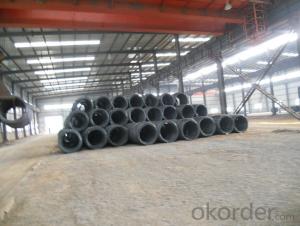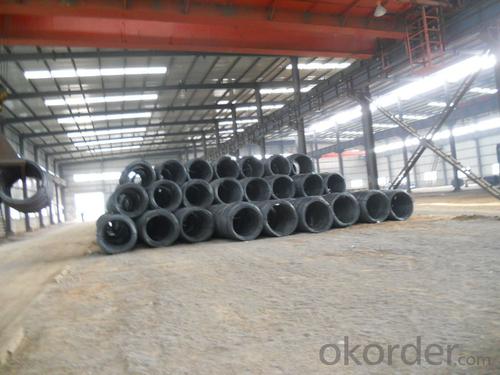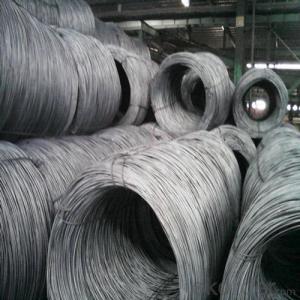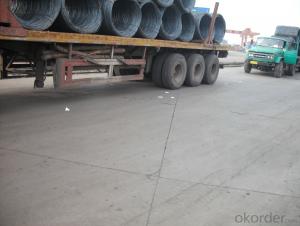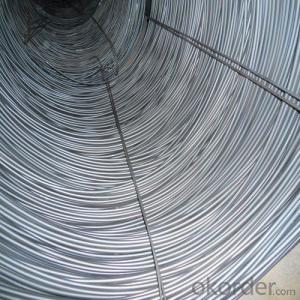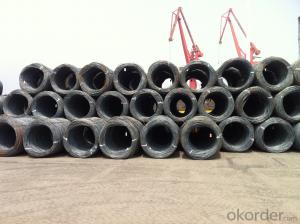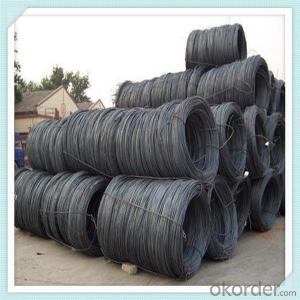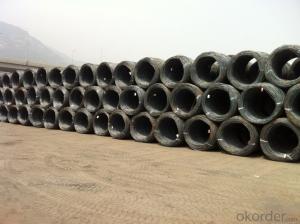Wire Rod , Hot Rolled Carbon Steel Wire Rod SAE1008
- Loading Port:
- Tianjin
- Payment Terms:
- TT or LC
- Min Order Qty:
- 25 m.t.
- Supply Capability:
- 200000 m.t./month
OKorder Service Pledge
OKorder Financial Service
You Might Also Like
OKorder is Wire Rod , Hot Rolled Carbon Steel Wire Rod SAE1008 at great prices with worldwide shipping. Our supplier is a world-class manufacturer of steel, with our products utilized the world over. OKorder annually supplies products to European, North American and Asian markets. We provide quotations within 24 hours of receiving an inquiry and guarantee competitive prices.
Product Applications:
Wire Rod , Hot Rolled Carbon Steel Wire Rod SAE1008 are ideal for structural applications and are widely used in the construction of buildings and bridges, and the manufacturing, petrochemical, and transportation industries.
Product Advantages:
OKorder's Wire Rod , Hot Rolled Carbon Steel Wire Rod SAE1008 are durable, strong, and resist corrosion.
Main Product Features:
· Premium quality
· Prompt delivery & seaworthy packing (30 days after receiving deposit)
· Corrosion resistance
· Can be recycled and reused
· Mill test certification
· Professional Service
· Competitive pricing
Product Specifications:
1.Hot-rolled steel wire rod for building/construction
2.Near the seaport,low logistic cost
3.High precision,5-12mm
Product |
wire rod |
| Standard | AISI, ASTM, BS, DIN, GB, JIS |
| Material/steel grade | Q195-Q235,SAE1006B, SAE1008B, SAE1010B, SAE1018B, or according to customers requirements |
| Wire Gauge | 5.5-12mm |
| Coil weight | 1.8-2.1mts |
| MOQ | 25MT |
| Delivery Time | 15-30 days after receipt of L/C or deposit by T/T |
| Packing | In coil and load in container, if large quantity, by bulk vessel; Can be packed as customers' special requirements |
| Payment terms | 1).100% irrevocable L/C at sight. 2).30% T/T prepaid and the balance against the copy of B/L. 3).30% T/T prepaid and the balance against L/C |
| Application | widely used in machinery parts, manufacturing industry, electronics industry, metal tools and others |
FAQ:
Q1: Why buy Materials & Equipment from OKorder.com?
A1: All products offered byOKorder.com are carefully selected from China's most reliable manufacturing enterprises. Through its ISO certifications, OKorder.com adheres to the highest standards and a commitment to supply chain safety and customer satisfaction.
Q2: How do we guarantee the quality of our products?
A2: We have established an advanced quality management system which conducts strict quality tests at every step, from raw materials to the final product. At the same time, we provide extensive follow-up service assurances as required.
Q3: How soon can we receive the product after purchase?
A3: Within three days of placing an order, we will begin production. The specific shipping date is dependent upon international and government factors, but is typically 7 to 10 workdays.

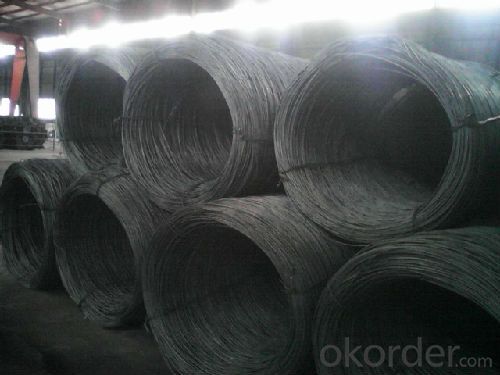
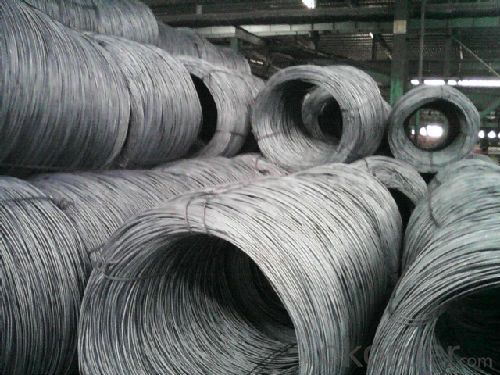
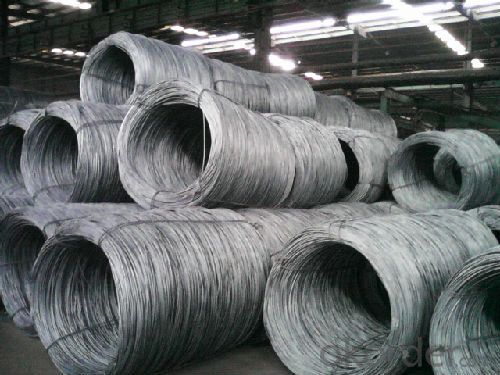
- Q: Can steel angles be customized or fabricated to specific requirements?
- Steel angles have the ability to be customized or fabricated according to specific requirements. With their versatility, steel angles can easily be modified to meet a variety of specifications and applications. Various fabrication processes, such as cutting, drilling, welding, and bending, can be employed to tailor steel angles to the desired shape, size, and dimensions. This enables the creation of steel angles with specific lengths, thicknesses, and angles, satisfying the unique demands of construction or engineering projects. Customized steel angles find utility in numerous applications, including structural framing, supports, brackets, reinforcements, and architectural designs. In summary, the flexibility of steel angles in customization and fabrication makes them highly suitable for meeting a wide range of construction and industrial needs.
- Q: What are the different methods of surface painting for steel angles?
- There exists a variety of techniques for surface painting steel angles, each offering distinct advantages and considerations. 1. Brushing: The most commonly employed method for surface painting steel angles involves the manual application of paint using a brush. Brushing provides excellent control and precision, making it well-suited for smaller projects or touch-ups. However, it may not be as efficient for larger-scale applications. 2. Spraying: When a large area needs to be painted quickly, spraying is a popular technique for painting steel angles. It involves the even distribution of paint onto the surface using a paint spray gun or aerosol canister. Spraying results in a smooth and uniform finish, but proper safety precautions, such as wearing a mask and ensuring adequate ventilation, are necessary. 3. Dipping: In this method, steel angles are immersed in a tank or container filled with paint. Dipping ensures complete coverage and is often utilized in high-volume production processes. However, it may not be suitable for angles with intricate designs or complex shapes, as excess paint may drip or accumulate unevenly. 4. Electrostatic painting: Electrostatic painting involves charging the paint particles and applying them to a grounded steel angle. This creates an electromagnetic attraction, resulting in an even and efficient coverage. This technique is commonly employed in industrial settings and aids in reducing paint waste and overspray. 5. Powder coating: Powder coating is a dry finishing process that entails the application of a fine powder onto the surface of a steel angle. The powder is then heated and fused onto the metal, creating a durable and visually appealing finish. Powder coating offers excellent corrosion resistance and can be done in a variety of colors and textures. However, specialized equipment is required, and it may not be suitable for small-scale or on-site applications. When selecting a surface painting method for steel angles, careful consideration must be given to factors such as project size and complexity, desired finish quality, environmental conditions, and available resources. Seeking guidance from a professional painter or coating specialist can help determine the most appropriate method for a specific application.
- Q: Can steel angles be used for support brackets in electrical installations?
- Yes, steel angles can be used as support brackets in electrical installations. Steel angles provide strength, durability, and stability, making them suitable for supporting heavy electrical equipment or mounting electrical panels securely. Additionally, their rigid structure ensures proper alignment and minimizes the risk of shifting or sagging over time.
- Q: Can steel angles be used for staircase handrails?
- Yes, steel angles can be used for staircase handrails. Steel angles are versatile and strong, making them a suitable choice for supporting and providing stability to staircase handrails. They can be easily welded or bolted to the staircase structure, ensuring a secure connection. Steel angles are also available in various sizes and lengths, allowing for customization to fit the specific dimensions and design requirements of the staircase. Additionally, steel angles can be finished with different coatings, such as powder coating or galvanization, to enhance their durability and resistance to corrosion. Overall, steel angles offer a practical and reliable option for constructing staircase handrails.
- Q: Can steel angles be used as supports for suspended acoustical ceilings?
- Steel angles have the capacity to function as supports for suspended acoustical ceilings. They are frequently employed as a primary structural element in suspended ceiling systems, serving to establish stability and provide support for the acoustical ceiling tiles. Additionally, they aid in evenly distributing the weight across the ceiling grid. To ensure the secure installation and optimal sound absorption, the steel angles are typically placed at regular intervals along the ceiling's perimeter and connected to the main suspension system. The utilization of steel angles guarantees that the acoustical ceiling remains firmly in position while effectively enhancing the acoustic qualities of the area.
- Q: How do steel angles contribute to the overall load distribution in a structure?
- Steel angles play a crucial role in contributing to the overall load distribution in a structure. These angled steel pieces, commonly referred to as angle irons or L-shaped beams, are commonly used as structural elements in construction projects. One of the significant contributions of steel angles is their ability to provide stability and support to various components of a structure. These angles are often used as braces, reinforcing the framework and preventing excessive movement or deformation. By distributing the load across different sections of the structure, steel angles help to evenly distribute the weight and stress, ensuring the overall stability and integrity of the building. Moreover, steel angles are frequently used as connections between different structural members. They can be bolted or welded to other beams, columns, or plates, acting as connectors that transfer loads from one component to another. This transfer of loads helps in redistributing the forces and minimizing concentrated stress, thereby enhancing the load-bearing capacity and overall performance of the structure. In addition, steel angles are also utilized in the construction of platforms, stairs, and other support structures. By providing a secure and stable platform for people or equipment, they contribute to the overall load distribution by safely distributing the weight and forces applied to these structures. Overall, steel angles are crucial in ensuring the overall load distribution in a structure by providing stability, support, and connections between various structural components. Their ability to evenly distribute the weight and stress helps in preventing structural failures, ensuring the longevity and safety of the building.
- Q: Can steel angles be used in mezzanine construction?
- Yes, steel angles can be used in mezzanine construction. Steel angles are often used as structural supports in mezzanine construction due to their strength and versatility. They can be used to create the framework and provide stability for mezzanine floors, making them a popular choice in this type of construction.
- Q: What is the typical thickness of the base of a steel angle?
- The typical thickness of the base of a steel angle can vary depending on the specific application and requirements. However, in general, the base thickness of a steel angle commonly ranges from 1/8 inch to 3/8 inch. It is important to note that this range is not exhaustive and there may be cases where the base thickness falls outside of these parameters. Factors such as the size, load-bearing capacity, and intended use of the steel angle will influence the base thickness required for a particular project or structure. Therefore, it is crucial to consult engineering specifications or professional guidance to determine the appropriate base thickness for a steel angle in a specific application.
- Q: What is the maximum allowable bearing stress for a steel angle?
- The maximum allowable bearing stress for a steel angle depends on various factors such as the specific grade of steel, the angle's dimensions, and the application requirements. It is essential to consult relevant design codes, standards, or engineering references for accurate and up-to-date information on the maximum allowable bearing stress for a steel angle in a specific context.
- Q: Can steel angles be used in architectural applications?
- Yes, steel angles can be used in architectural applications. Steel angles are commonly used in construction and architectural projects due to their strength, durability, and versatility. They can be used to provide structural support, reinforce corners and edges, and create aesthetically pleasing designs. Steel angles are often used in the construction of buildings, bridges, and other structures to provide stability and support. They can also be used to create architectural features such as decorative trim, handrails, and window frames. Additionally, steel angles can be easily fabricated and customized to meet specific design requirements, making them a popular choice for architects and designers.
Send your message to us
Wire Rod , Hot Rolled Carbon Steel Wire Rod SAE1008
- Loading Port:
- Tianjin
- Payment Terms:
- TT or LC
- Min Order Qty:
- 25 m.t.
- Supply Capability:
- 200000 m.t./month
OKorder Service Pledge
OKorder Financial Service
Similar products
Hot products
Hot Searches
Related keywords
